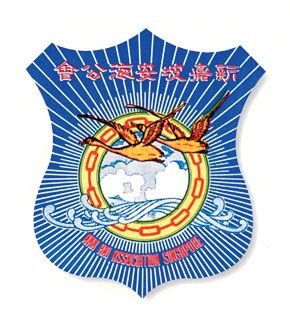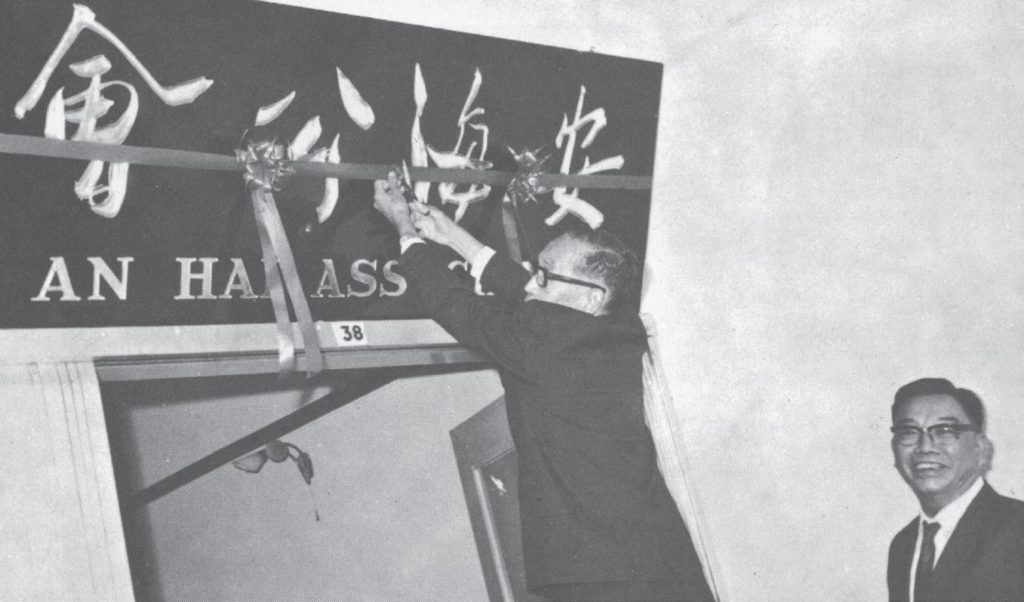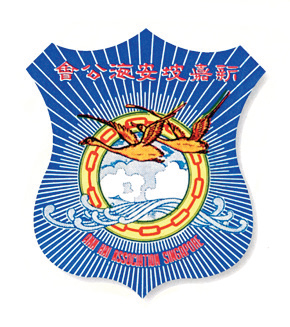
新加坡安海公会正式成立于1948 年,其前身星洲鸿江公所,却早在第一次世界大战期间就成立。公所会址就在丹戎巴葛路中段,俗称“菜市仔”的一家杂货店二楼。
星洲鸿江公所,是为了协助来到新加坡的安海人找个临时栖身之所才成立的组织。为什么取名鸿江?原来安海古时候也叫鸿江。30 年代,鸿江公所改名鸿江公会,会址设于余东璇街南天酒楼背后的北路。
篮球队和半月刊
二次世界大战结束,更多安海人飘洋过海来新加坡谋生,据说就那么一两年,安海同乡人数超过战前数倍。1946 年,安海人苏秋生和黄天铎倡导成立新加坡安海公会,第一次开会地点就在黄天铎的水果店“南全号”。不过,公会却是几经波折才在1948 年获准注册。
公会成立初期,会务发展迅速,首先成立安海篮球队,并参与其他篮球队的比赛,由于技术不错,很快就打响名气。可惜缺少经费,一年多后便停止活动。
公会还出版《星鸿》半月刊,以八开张纸面世,内容有通讯和文艺副刊等。这份杂志的稿件由新加坡方面提供,印刷则由家乡的陈益诸书局承印。书局主人陈炎书古道热肠,他除了免费印刷,还负责邮寄各地。后来稿件短缺,出了半年就停刊。
公会成立的首16 年皆由苏秋生担任主席,继任者是赖琼瑶和颜期巢。1970 年,颜期巢主席提出,购置会所是当前急务,执监委会表示赞同。于是由总务丁文稽带头募捐,会员热烈响应,筹足初期款项后就买下颜呈亮介绍的芽笼28 巷两层楼角头屋,也就是沿用至今的会所。

加强海外联系
著名中医王修德于1971 年继任主席,在全体执监委和会员的拥护下,安海公会的会务越发蓬勃。从这个时候开始,安海公会几乎每年都举行会庆,对外联系也十分活跃。
1978 年,公会主办第七届东南亚晋联庆典大会,受邀前来参加庆典的有台湾、香港、菲律宾、印度尼西亚和马来西亚各州的晋江团体代表。来宾都汇集在狮城大酒店,宴会则在公会大门外的马路上举行,一时整条马路都摆满酒席,热闹非常。第二天,各界来宾也参加了在中华总商会举行的研讨会,共同交换搞好同乡会的方法,并形成议案通过。
此后,安海公会便加强了与海外团体的联系,特别是与马来西亚各州同乡会的来往就比以前密切得多。1983 年,黄加种被推选为第五任主席。在他在任期间,恰逢中国家乡大力推行改革开放政策,新中两国来往日趋频繁,中国乡亲经常来访考察及参加各种商务活动,黄加种都亲自接待,大大加强公会与家乡亲友的联系,会务提升至另一个层次。
在安海投资基建
黄加种接任后的第一件事就是筹款设立奖学金,鼓励会员子女勤勉好学,争取攀登学术高峰,以便将来为社会国家作出更大贡献。1991 年,他为了支持家乡建设,联合海外商界朋友投资巨款,在安海创办安平开发区,把一片荒废的海滩,建设成现代化的商贸新城。他们同时兴建安平港码头,为中国家乡与海内外的交通运输业,创造发展的有利条件。
黄加种为繁荣家乡经济的努力,以及慷慨捐资文教医疗事业的贡献,在海内外传为美谈,也进一步加强了公会与中国祖籍的亲密关系。这些年来,公会也先后组团访问安海。与此同时,安海的党政领导人及工商文教界人士,也经常前来新加坡访问。
1993 年,在蔡少辉主席的领导下,公会会务尤其活跃。1995 年12 月,福建会馆属下的晋江、南安、惠安、同安、安溪、金门诸会馆、仁和联谊社及安海公会,联合设宴招待晋江市的官员和各单位代表。宴会设于董宫大酒楼,主持人就是蔡少辉。
1996 年5 月1 日,安海举行建镇866 年庆典,蔡主席带领10 多名公会代表出席。公会代表团受到安海镇政府,及相关团体的隆重欢迎和亲切招待。蔡主席在任时,也促成整理最新的会员通讯录,并印发赠送给全体会员及相关团体。同年,会所进行翻新。
1997 年,颜呈瑞担任第七届主席。10 月,他趁安海水心亭三圣殿举行落成,佛祖开光之盛会组团回乡,参加者40 多人。这次还乡,节目丰富,招待殷勤,旅行的膳宿费用全由颜主席负责。

旧房换新楼
安海公会现在有会员150 多人,每年主要的会务活动是新春团拜,一般都能吸引80 多人出席。会上也颁发各学习阶段的助学金,包括小学、中学、理工学院、初级学院和大学等。中元节也是公会一年一度的重要活动,举行公祭的日子会预先通知会员,反应都很热烈。
2010 年,安海镇征用好些旧房子重新发展,受影响的屋主有部分是新加坡人。为了方便登记工作,安海镇领导亲自带队来新加坡,会见了50 多名新加坡屋主,并为他们办理好手续。有的选择现金赔偿,有的等待领取新物业。
2016 年,旧房子已变成一栋栋高楼大厦。10 月,安海公会带领安海同乡见证了新房子落成,并询问有关领新房子的手续和分配住房单位。
—
Chronicles of Singapore Ann Hai Association

Photo description: Official emblem of Singapore Ann Hai Association
Although formally established in 1948, Singapore Ann Hai Association has a long history going back to as far as the First World War. Then, the association was known as the Sin Chew Hong Jiang Public Office and was located at Tanjong Pagar Road, on the second floor of a mama store named “Cai Shi Zai”.
The objective of setting up the public office was to assist Ann Hai migrants in finding a settlement locally. Why was the office named Ann Hai Hong Jiang? It turned out that Ann Hai was called Hong Jiang in ancient times.
Later in the 1930s, Hong Jiang Public Office was renamed Hong Jiang Association, and the headquarters was shifted to the North Road behind Nan Tian Restaurant on Yu Dong Xuan Street.
—
Ann Hai Basketball Team and Bimonthly Xin Hong Publications
Towards the end of World War II, an increasing number of people came to Singapore from Ann Hai to make a living. Within just two years, the proportion of Ann Hai migrants in Singapore swelled to several times larger than before the war.
In 1946, the late Su Qiu Sheng and Huang Tian Duo, who were both from Ann Hai, advocated the establishment of the Singapore Ann Hai Association. The association’s first meeting was held at Huang Tian Duo’s fruit shop named ‘Nan Quan Hao‘. Due to several setbacks, the establishment of the association was only officially approved two years later, in 1948.

Photo description: Ann Hai Association’s ribbon cutting ceremony. Middle: founder Su Qiu Sheng. Right: executive committee member Zhang Tianzhang.
The association grew rapidly after its founding. A basketball team was started and the team participated in several competitions. Due to its good record, the team quickly became famous. However, a lack of funds resulted in activities ceasing shortly after a year.
The association also produced bimonthly Xin Hong publications, each being 8 pages long. The content of the publications included news reports, notifications, and literary supplements. Manuscripts were drafted locally before being sent to Ann Hai’s Chen Yi Zhu bookstore for printing. The owner of the bookstore, Chen Yan Shu, was kind-hearted and generous. Not only did he print the publications for free, he also took care of shipping them to various locations. Later, due to a shortage of manuscripts, publications were suspended.
For the first 16 years after the establishment of Ann Hai Association, Su Qiu Sheng served as the chairman. His successors were Lai Qiong Yao and Yan Qi Chao. In 1970, chairman Yan Qi Chao proposed the purchase of a clubhouse, and the Executive Supervision Committee agreed. General manager Ding Man Ji led a fundraising, to which members responded enthusiastically. With the initial funds, the association bought the two-story corner house at Geylang 28 Lane introduced by Yan Cheng Liang, which is still in use today.
Strengthening International Connections
Mr Wang Xiu De, then a famous Chinese medicine practitioner, took over as chairman in 1971. With the full support of the Executive Supervision Committee and association members, Ann Hai Association bustled with activities. First came the commencement of annual celebrations. Then began the building of external relations.
In 1978, Ann Hai Association hosted the 7th Southeast Asia Jinlian Conference. Representatives of Jin Jiang groups from Taiwan, Hong Kong, the Philippines, Indonesia, and Malaysia were invited to attend the conference, which was conducted in the Lion City Hotel. Additionally, a huge and glamorous banquet was held right outside the association’s headquarter. Tables lined the entire stretch of road and the atmosphere was lively. On the second day, all participants partook in a seminar hosted by the Singapore Chinese Chamber of Commerce and Industry. Ideas for improving the management of the associations were shared and proposals were drafted.
Since then, Singapore Ann Hai Association continued in its efforts to strengthen its ties with overseas groups, especially with the Malaysian state associations.
In 1983, Mr Huang Jiazhong was elected as the fifth chairman. His tenure coincided with the period of time when China started to vigorously implement reforms and opening-up policies. Exchanges between Singapore and China became increasingly frequent. Additionally, more and more fellow Ann Hai townfolks visited Singapore to engage in various business activities and Mr Huang Jiazhong did his best to personally attend to them. This greatly strengthened the association’s connections with town folks back in Ann Hai.
Infrastructure Investments in Ann Hai
The first thing Mr Huang Jiazhong did after taking over as chairman was to raise funds to set up scholarships. The aim of giving out scholarships was to encourage the children of association members to pursue academic excellence, so that they can make greater contributions to the society and the country.
In 1991, to support the development of Ann Hai, Mr Huang Jiazhong, together with his overseas business partners, invested huge sums of money in the establishment of an Anping Development Project. This project turned a deserted beach into a modern commercial and trade city. At the same time, Mr Huang and associates constructed a port to stimulate the growth of international commerce. The port is now known as the Port of Anping.
Mr Huang’s efforts to prosper Ann Hai’s economy, as well as his generous donations to cultural, educational, and medical undertakings, were well-received at home and abroad. This further strengthened the association’s close relationship with Ann Hai. Additionally, the association organised periodic group visits to Ann Hai. Ann Hai’s congress members, businessmen, and scholars also frequented Singapore.
In 1993, Mr Cai Shaohui took over as chairman. In December 1995, associations under the umbrella of Fujian, namely the Jinjiang Association, Nan’an Association, Hui’an Association, Tong’an Association, Anxi Association, Jinmen Association, Renhe Association, and Ann Hai Association, jointly hosted a banquet. The banquet was held at the Dong Palace Restaurant, and Mr Cai Shaohui was the MC (master of ceremonies).
On 1st May 1996, Ann Hai held the 866th anniversary of the founding of the town. Chairman Cai led more than 10 association representatives to attend. The delegation was warmly received by the Ann Hai Town Government and related groups. During his term, Mr Cai also compiled the contact details of all association members into an address book, which was printed and distributed to all members and related groups. In the same year, the association’s headquarter was renovated.
In 1997, Mr Yan Chengrui was inducted as the seventh chairman. In October that year, he led a group of more than 40 association members in a visit to Ann Hai. This was in line with the inaugural of the Ann Hai Xinting Three Holy Temple and the grand Buddha Open Light Ceremony. The trip was eventful, and the hospitality was excellent. Boarding and lodging expenses were covered by chairman Yan.

Photo description: After the demolishment of a part of Ann Hai Town, dislocated homeowners were distributed housing units. This photo shows the new housing units standing behind the Ruiguang White Pagoda. This photo is taken at the famous Wuliqiao Park, which has more than 800 years of history under its belt.
Reconstruction of Old Buildings
In 2010, Ann Hai Town requisitioned several old buildings for redevelopment, and some of the affected homeowners were Singaporeans. In order to facilitate administrative work, the in-charge of Ann Hai Town personally led a team to Singapore and met with more than 50 homeowners. Some chose to receive cash compensations, while others wait to receive a new property.
By 2016, the old buildings have been transformed into contemporary high-rise buildings. In October that year, Ann Hai Association led a team down to witness the completed buildings and to ask about the administrative procedures needed to obtain the new units.
The current Ann Hai Association has more than 150 members. The main event every year is the Spring Festival Ceremony, which usually attracts more than 80 people to attend. Bursaries are also awarded at all stages of study, including primary, secondary, ITE, polytechnic, junior college, and university. Another highlight is the annual celebration of the Mid-Autumn Festival. For all events, members are notified in advance and responses have always been enthusiastic.
